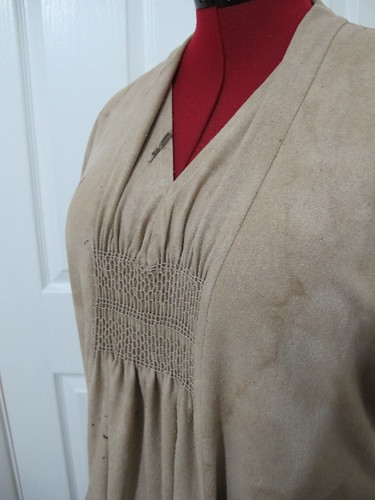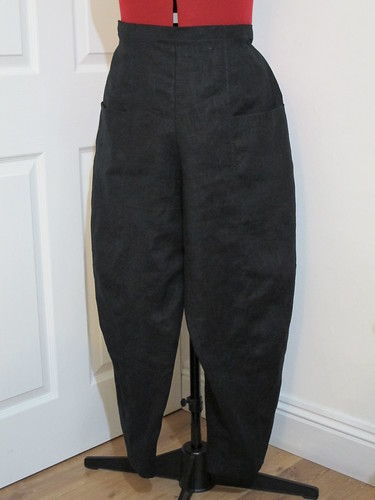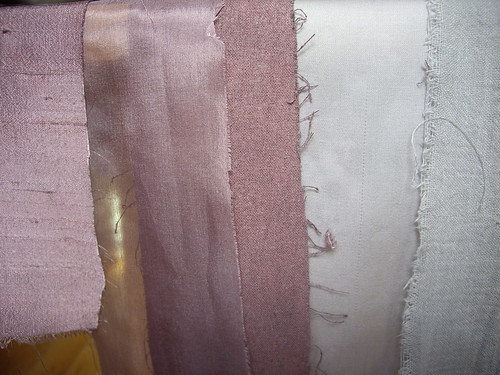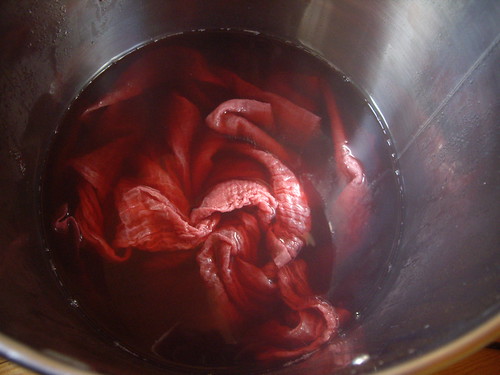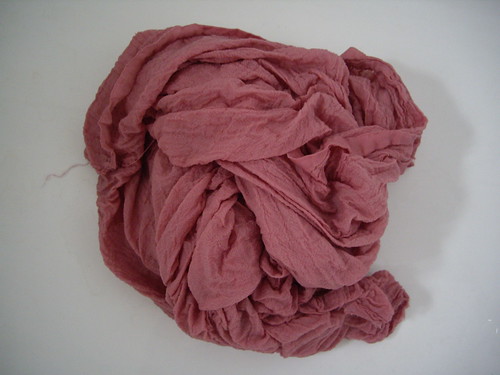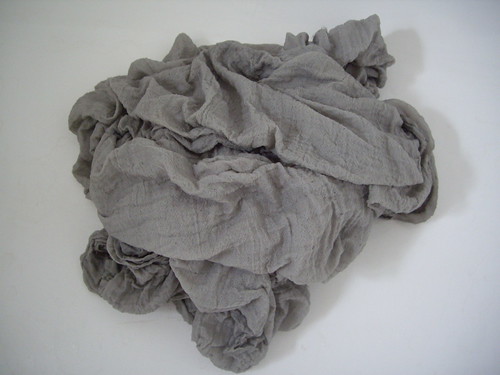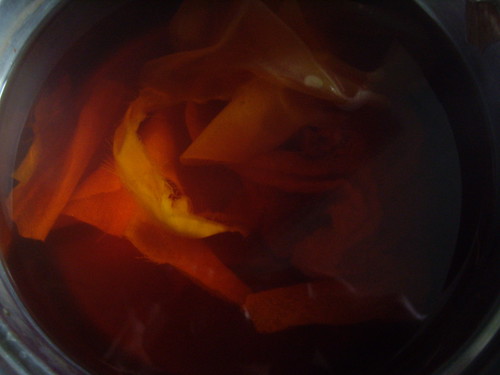First completed garment of 2014 – this is Marcy Tilton for Vogue, 8813. The fabric is silk noile, dyed in my tea urn with about six months’ worth of saved tea bags. I blogged about my failed attempt at dyeing the fabric and scalding my foot, but apparently I failed to mention the second attempt, which came out looking lovely! Well, I think so, anyway.
Paul doesn’t much like the black marks, which are iron stains from rusty nails. I’m slightly concerned that people will make “hilarious” jokes about tea stains, but I really love this fabric. I plan to over-dye it every six months or so with the tea bags that I’m still saving. I figure that each successive dye bath will add new stains and patches and colours, which will add lots of depth and texture.
Some of you have been following the progress of the smocking over on Facebook… ta-da!
I’m slightly peeved about the wonky bit in the centre, caused by a dart that I added after the smocking rather than before. Note to self: read the instructions all the way through, especially if you’re making changes to the pattern.
Often when I’ve finished sewing something I’m so sick of the sight of it that I can’t even think about making another one. I enjoyed working on this dress so much that I’m already thinking about different colour combinations, and wondering how many I can get out of the fabrics I’ve already got in my stash. There’s a version suggested with contrasting colour panels, one with buttons on the enormous pockets… and I want to wear them all!
Notes on the pattern: BE CAREFUL. It’s not difficult by any means, but there are a few places where you need to be really accurate otherwise you’ll come unstuck. You also need to read the instructions properly *cough*, as the pocket construction in particular is a bit origami-like. The back, by way of contrast is completely plain and flat.
Fitting-wise, the only measurement you need to worry about is the full bust. If the dress is too tight across the front, it’ll be too tight under the arms and through the cap sleeves. I still went down a size from my usual Vogue Large to a Medium, and there’s plenty of room to breathe.
This, as you may be able to tell, is not another dress. It is another Marcy Tilton though, Vogue 8499. These trousers have a flat front and elasticated back, large pockets, and darts at the knees. They’re very wide at the hips, tapered at the ankle, and sit very high at the waist. Perfect!
My only complaint about this pattern is that there are no actual garment measurements given anywhere! If I’d sewn my usual Vogue size 18 or 20, these would have been phenomenally huge, even for a very baggy style like this. After reading a lot of reviews online, I took a gamble and made a size 14. This has turned out spot on, thank goodness. Any smaller and I wouldn’t have been able to pull them over my hips, but thankfully there’s still plenty of ease.
Once again, parts of the pattern require absolute accuracy. I ended up with a tiny hole in the waistband where I sewed past one of the small dots by a couple of stitches, though it was easily fixed.
This picture doesn’t really do them justice, although I think you can get an idea of the shape. I think they’ll also work well in lightweight corduroy, or maybe a nice drapey suit wool. They’re so comfortable that, like the dress, I want to make more already!



